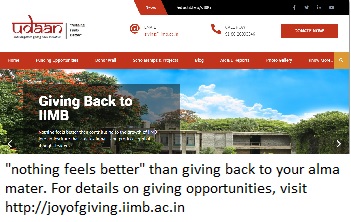How metaverse can change the economics of museums
– Dr. A. Damodaran, Economics Area, IIMB
The popular notion of the metaverse being a capital-wasting social media interaction fad obscures some of its potential welfare impacts. Here’s how museums and art galleries can exploit it for their benefit

Virtual museums have been perhaps one of the most creative outcomes of Web 2.0. These entities have primarily assumed the shape of brick-and-mortar museums that offer virtual tours to customers. The Guggenheim, the Metropolitan Museum of Arts, the Louvre and India’s National Museum, New Delhi are among the leading museums of the world that have introduced virtual tours. Virtual tours differ in their degree of sophistication. The Guggenheim positioned Google’s street views against the backdrop of its unique layout. The Smithsonian and the Ontario Art Gallery went a step ahead and brought Augmented Reality (AR) into play. It was not until the onset of Covid-19 that extended reality gained real traction in the world of museums. However, the advent of the Metaverse takes us one step closer to Kenneth Boulding’s self-contained, Spaceship economy, with the exception that this time around, we are dealing with an alternative virtual universe that is experience and exchange driven.
The front-end building blocks of the metaverse include extended reality creations and Avatars that promise a special ‘immersive’ experience for its customers. The backbone of the metaverse lies in high-speed, low-latency communication networks (ideally the 5G) and distributed data storage systems. The background tools applied in the metaverse include teleporting hardware (notably ocular devices), 3-D modelling systems, IoTs and AI.
The ‘heart’ of the metaverse, however, lies in its distinctive monetary system that runs on crypto-tokens, which, in turn, are powered by smart contracts blockchains. Indeed the metaverse largely obeys the logic of value and exchange underlying tokenomics. Digital Tokens generated in the metaverse ecosystem can be utilised as collateral assets to leverage financial resources necessary for running museums. The most critical set of tokens that power the metaverse economy of a museum is Non-Fungible Tokens (NFTs) or tokens that are one of their kind.
What is not often recognised, is the fact that NFTs in the metaverse fall in a different genre when compared to the NFTs that are minted and traded in the real world. This is because the metaverse is built on the foundations of Web 3, which is premised on the idea of a creator’s economy, in which the creator (or the artist) directly harvests the fruits of her labour. Thus the NFTs minted in the metaverse are primarily identity focused, unlike ‘real world’ NFTs which pay greater attention to the product that is turned into an NFT.
Museums across the world suffer from funding constraints. However, this handicap can be reversed through the metaverse. It is axiomatic that small galleries and museums tend to attract less footfall as compared to their larger counterparts, partly due to the restricted stock of collections and partly on account of low set-aside areas. Museums with large set-aside areas enjoy larger footfall, as their visitors derive varied experiences. On the other hand, smaller museums, which are constrained to optimise revenue per unit exhibition area, experience a loss of customers as their exhibition halls get overcrowded. The onset of Covid-19 led to smaller museums and galleries suffering losses on account of not being able to meet social distancing norms. A metaverse ecosystem, with its inherent (virtual) land elasticity property, can radically change the fortunes of small galleries and museums since these entities would experience a drastic improvement in their spatial coverage by supplementing their limited physical spaces with large, immersive virtual spaces.
Large museums with substantial set-aside areas would also benefit, as they could craft alternative uses for their set-aside areas in the metaverse. For instance, the stately garden of the Victoria Memorial Hall, Kolkata, can be re-created in the metaverse to depict the story of how Viceroy Curzon struggled to construct the museum to please the British Royal family.
One of the limitations of museums has been their inability to institute well-structured education programs for children. It takes many physical visits for children to gain an in-depth understanding of the art collections housed by museums, in their historical and aesthetic essence. By designing immersive programmes that expose children to art collections from the comfort of their homes, museums can emerge as vital education centres for young minds. What is more, by tokenizing Metaverse-driven education services, it becomes possible for museums to mobilise financial resources for their upkeep.
Similarly, museums like the Montreal Museum of Fine Arts (MMFA) have focused, in a major way, on wellness and art therapy programmes for the aged and the unwell. The program, with its inherent tactility, lost its momentum during Covid-19. By creating a virtual world in the metaverse, aided by haptic technologies, such virtual wellness programs could insulate themselves from pandemic-related restrictions. More fundamentally, these programs could also reach a wider community of users.
The final manner in which metaverse helps museums is by providing new capabilities for museum workers (including interns and apprentices) who bear the brunt of recessions and pandemics by furloughs or lay-offs. As museums turn, bi-spatial (virtual and real) not only do they increase the diversity of their offerings but also enhance job security for their base-level workers through retrained skill sets.
The popular notion of the metaverse being a capital-wasting social media interaction fad obscures some of its potential welfare impacts. While it is true that the metaverse ecosystems are hard to access for small arts organisations, the availability of platforms like Horizon world, Altspace or Roblox that offer ‘easy to access’, high-end tools to create immersive experiences can serve as a major boost to small museums and galleries, which desire to reverse their economic adversity. However, for the idea of metaverse to gain traction in the world of arts, a robust ‘token-based’, value exchange mechanism is a pre-requisite.
Source: Forbes India


